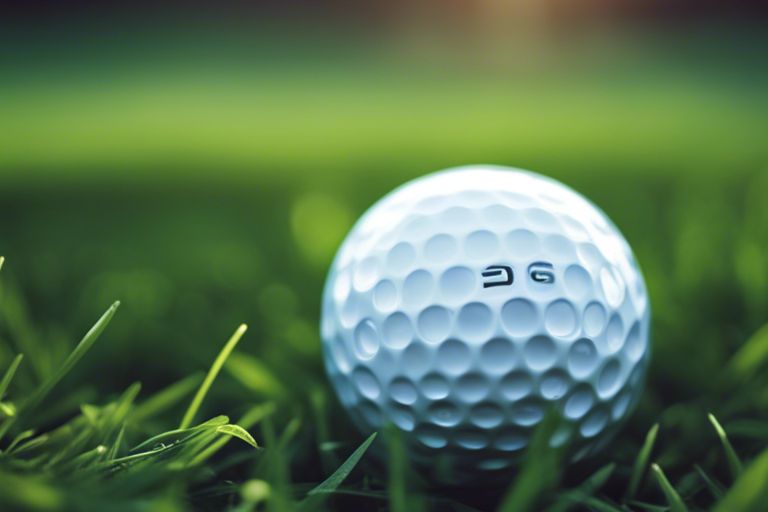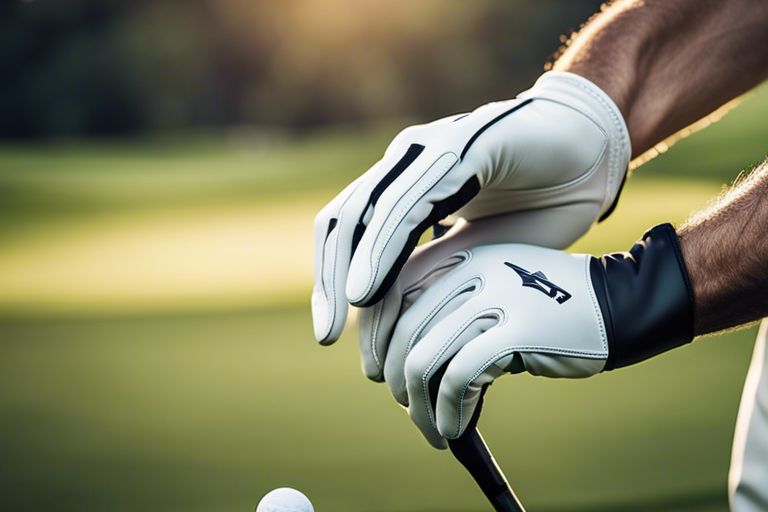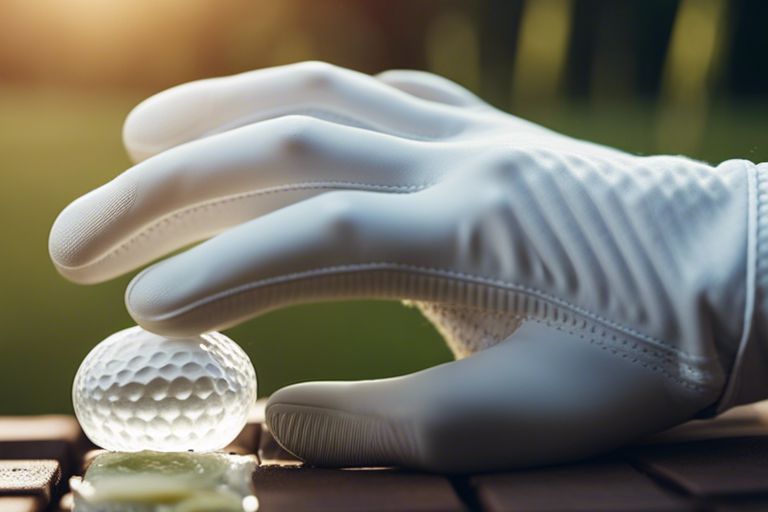Over the vast green stretches of a golf course, the aerodynamics of a golf ball are paramount to your swing. Have you ever pondered upon the purpose of those tiny dimples dotting the surface of a golf ball? In this informative piece, we explore into the intricate science behind the dimples on golf balls and how they can greatly influence your game. Let’s commence on a journey to uncover the fascinating reason behind this seemingly simple yet crucial design feature.

Key Takeaways:
- Reduced drag: Dimples on golf balls help reduce drag, allowing the ball to travel farther and straighter when hit.
- Aerodynamic lift: The dimples create an aerodynamic lift, helping the golf ball stay in the air longer and have a more stable trajectory.
- Increased spin: Dimples help create backspin on the ball, which can help with control and stopping power on the green.

The Origins of Dimples
Early Golf Ball Designs
Your journey to understanding why golf balls have dimples begins with exploring the early designs of these sports importants. In the early days of golf, balls were smooth, which caused them to travel a relatively short distance when struck. These smooth-surfaced golf balls were made of hardwood, such as beech or box root, and later transitioned to feathers tightly packed into a leather pouch.
The Accidental Discovery
Any avid golfer knows the pivotal moment in golf history when the accidental discovery of dimples revolutionized the game. In the mid-1800s, golf balls transitioned from smooth surfaces to dimpled ones, thanks to an unintentional discovery. Golfers noticed that older, beat-up balls with imperfections and indentations actually traveled greater distances than their newer, smooth counterparts.
An accidental discovery by golfers led to the realization that the irregularities on golf balls created turbulence as they flew through the air. This turbulence helped the balls travel farther, leading to the incorporation of intentional dimples on golf balls to optimize their aerodynamics.
Understanding the Aerodynamics
Understanding the science behind why golf balls with dimples travel farther than smooth ones involves delving into aerodynamics. The dimples on a golf ball create a thin layer of turbulent air around the ball as it moves through the air. This turbulent layer reduces the drag force acting on the ball, allowing it to fly farther and more accurately than a smooth-surfaced ball.
The Science Behind Dimples
One potential reason for the dimples on golf balls is to enhance their aerodynamics and reduce drag. By having dimples on the surface of the golf ball, the airflow around the ball becomes turbulent instead of remaining smooth, creating a smaller wake behind the ball. This reduction in drag allows the ball to travel farther when hit with the same force.
Aerodynamics and Drag
To understand the science behind dimples, you must examine into aerodynamics. When a smooth golf ball flies through the air, it creates a high-pressure zone in front and a low-pressure zone behind it, causing drag that slows it down. The dimples disrupt the airflow around the ball, creating a thin turbulent boundary layer that reduces drag and allows the ball to fly more efficiently through the air.
Turbulence and Laminar Flow
Drag is a force that opposes the motion of an object through a fluid, such as air. In the case of golf balls, the dimples on the surface create turbulence in the airflow, reducing drag and allowing the ball to travel farther. By promoting turbulence over laminar flow, the dimples help the ball maintain a steadier and more predictable trajectory.
The Role of Surface Roughness
Dimples on golf balls play a crucial role in altering the surface roughness of the ball. The dimples create a thin layer of air that clings to the surface, allowing the ball to move more smoothly through the air. This decrease in air resistance enables the ball to maintain its speed and carry further when struck by your club.
Science
Aerodynamics studies the motion of air and how it interacts with objects moving through it, such as golf balls. The surface roughness of a golf ball, influenced by the presence of dimples, significantly impacts its aerodynamic performance. The strategic placement and design of dimples help golf balls achieve optimal flight characteristics for maximum distance and accuracy.
The Benefits of Dimples
Increased Distance and Accuracy
All these dimples are not just for show! For golf balls, having dimples means improved aerodynamics. When a golf ball is hit, it creates a thin layer of air around it called the boundary layer. The dimples on the surface of the ball help create turbulence in the air flowing around it. This turbulent air clings to the ball’s surface for a longer time, allowing the airflow to follow the ball’s curvature better. As a result, the ball experiences less drag and can travel much farther than a smooth ball with the same force behind it. Additionally, the turbulent air helps reduce the sidespin on the ball, leading to increased accuracy in your shots.
Improved Consistency and Control
Benefits also include improved consistency and control in your game. The dimples on a golf ball help enhance its lift and stability during flight. This means that when you hit a dimpled ball, it is less likely to wobble or veer off course mid-flight. The consistent aerodynamic performance of a dimpled ball allows you to have more control over your shots, leading to better precision and overall improved performance on the course.
Plus, the dimples help ensure that the ball’s flight is more predictable, making it easier for you to adjust your swing and aim. Consistency is key in golf, and the dimples on a golf ball play a significant role in helping you achieve that.
Reduced Drag and Wind Resistance
For reducing drag and wind resistance, dimples are your best friend on the golf course. The dimples on a golf ball create a thin, turbulent boundary layer of air around the ball, which reduces the drag force acting against it. This means that the ball can cut through the air more smoothly, resulting in less resistance and allowing it to maintain its speed and distance better, even in windy conditions.
With reduced drag and wind resistance, you can achieve longer and more accurate shots with less effort. This can give you a competitive edge on the course, especially when facing challenging weather conditions. So, next time you tee off, remember that those tiny dimples on your golf ball are there to help you soar through the air with precision and ease.

The Optimal Dimple Pattern
Size, Shape, and Distribution
Not all dimples on a golf ball are created equal. With advancements in technology and aerodynamics, manufacturers have studied and experimented to find the perfect combination of dimple size, shape, and distribution. The overall goal is to reduce drag and increase lift as the ball flies through the air.
The Importance of Symmetry
An important aspect of the optimal dimple pattern on a golf ball is symmetry. By ensuring that the dimples are evenly distributed around the surface of the ball, aerodynamic properties can be maximized. Symmetry helps create a consistent airflow around the ball, reducing turbulence and allowing for a smoother, more stable flight.
Plus, symmetrical dimple patterns also help in maintaining the balance of the ball while it is in motion, leading to more accurate shots and improved overall performance on the golf course.
The Impact of Dimple Depth and Spacing
Importance is also placed on the depth and spacing of the dimples on a golf ball. The depth of the dimples affects how much turbulence is created, which, in turn, impacts drag. Optimal dimple depth can help minimize drag and increase the ball’s distance when struck.
Shape of the dimples can also play a crucial role in the ball’s aerodynamics. Different dimple shapes can influence airflow differently, affecting the lift and drag forces acting on the ball as it moves through the air. Manufacturers carefully consider these factors to design golf balls that optimize performance for different playing styles and conditions.
Debunking the Myths
Now let’s investigate into the myths surrounding why golf balls have dimples. The popular belief that dimples on golf balls are there to make them fly farther might seem logical, but let’s explore the truth behind this concept.
The “Dimple Myth” Explained
Explained: The dimples on a golf ball actually reduce drag as the ball flies through the air. When a golf ball is hit, it creates a turbulent wake behind it. The dimples help create a thin layer of air that clings to the ball’s surface, allowing the air to flow more smoothly around the ball. This reduction in drag results in a longer and more stable flight.
Separating Fact from Fiction
One common misconception is that the number of dimples on a golf ball affects how far it will travel. The truth is that the size, shape, and pattern of the dimples are more critical factors in determining the ball’s performance. Manufacturers carefully design the dimple patterns to optimize lift and reduce drag, ultimately enhancing the ball’s flight characteristics.
Myth: Another myth is that smooth golf balls would fly farther than dimpled ones. In reality, a smooth golf ball would experience significantly more drag than a dimpled one, resulting in a shorter and less accurate shot. The dimples are vital for the optimal aerodynamics of a golf ball, helping it achieve maximum distance and stability.
The Evolution of Dimple Design
Many golfers wonder how the dimple design on their golf balls has evolved over the years. The truth is, the advancement in dimple technology has been an ongoing process, with various factors contributing to the efficiency and performance of modern golf balls.
Advances in Materials and Manufacturing
Manufacturing processes have significantly improved over time, allowing for more precise dimple patterns and consistency in the design of golf balls. The use of advanced materials has also played a crucial role in enhancing the durability and aerodynamics of golf balls. These advancements have led to golf balls that can maintain their dimple patterns and flight characteristics over a more extended period, providing a better playing experience for golfers.
Computer-Aided Design and Simulation
With the advent of computer-aided design and simulation tools, golf ball manufacturers can now create and test thousands of dimple patterns virtually before moving to production. This technology has revolutionized the dimple design process, allowing for more precise optimization of aerodynamic properties and performance. Manufacturers can now fine-tune dimple designs to achieve specific flight characteristics, catering to the needs of various types of golfers.
This level of precision has led to the development of golf balls that offer improved distance, accuracy, and control on the golf course. The ability to simulate different scenarios and conditions has enabled manufacturers to create golf balls that perform exceptionally well in a variety of situations, giving golfers the confidence they need to take on any challenge.
The Future of Golf Ball Technology
Any avid golfer can attest to the continuous evolution of golf ball technology. As advancements in materials, manufacturing processes, and design tools continue to progress, the future of golf balls looks promising. Manufacturers are constantly pushing the boundaries of innovation to develop golf balls that offer even greater performance and playability.
Final Words
Now that you know why golf balls have dimples, you can appreciate the science behind this seemingly simple sport. The dimples on a golf ball are not just for decoration; they play a crucial role in improving the ball’s aerodynamics and allowing it to travel further and more accurately. Bear in mind, the next time you hit the green, those dimples are there to help you achieve those perfect shots.
Q: Why do golf balls have dimples?
A: Golf balls have dimples to reduce drag and increase lift as they fly through the air. The dimples create a thin turbulent boundary layer of air around the ball, which helps it travel farther and more accurately.
Q: How do dimples on a golf ball affect its performance?
A: The dimples on a golf ball help reduce air resistance, also known as drag, allowing the ball to maintain its speed and travel a longer distance. The dimples also create lift, helping the ball stay in the air longer and have a more consistent flight path.
Q: Do all golf balls have the same dimple pattern?
A: No, not all golf balls have the same dimple pattern. Different golf ball manufacturers use unique dimple designs and configurations to optimize the ball’s performance. Some dimple patterns are designed for distance, while others are focused on control and spin.




